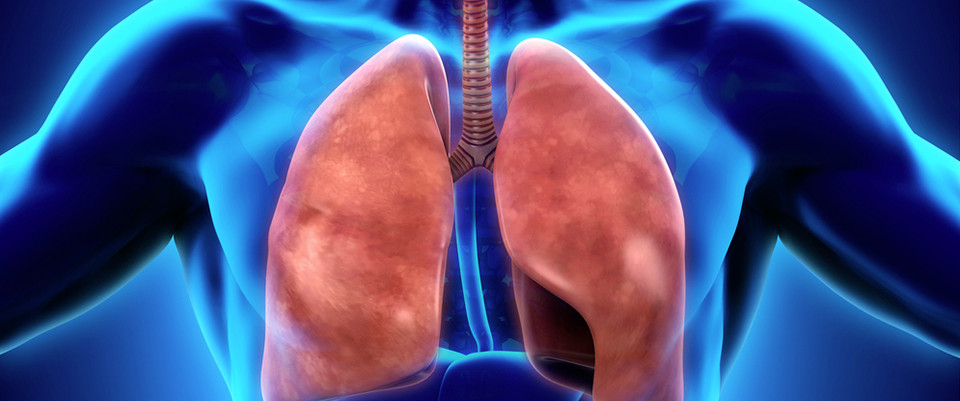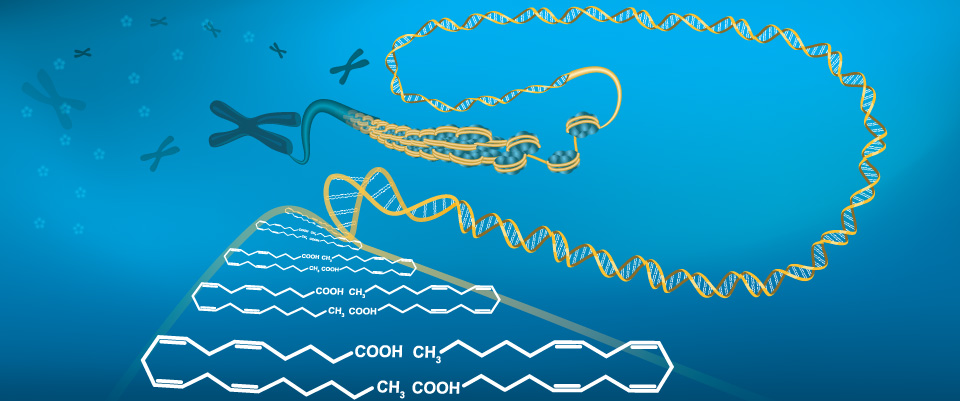PubMed
Metabolomic Analysis Identifies Lactate as One Important Pathogenic Factor in Diabetes-associated Cognitive Decline Rats.
Related Articles
Metabolomic Analysis Identifies Lactate as One Important Pathogenic Factor in Diabetes-associated Cognitive Decline Rats.
Mol Cell Proteomics. 2018 Aug 31;:
Authors: Zhao L, Dong M, Ren M, Li C, Zheng H, Gao H
Abstract
Diabetes mellitus causes brain structure changes and cognitive decline, and it has been estimated that diabetes doubles the risk for dementia. Until now, the pathogenic mechanism of diabetes-associated cognitive decline (DACD) has remained unclear. Using metabolomics, we show that lactate levels increased over time in the hippocampus of rats with streptozotocin-induced diabetes, as compared to age-matched control rats. Additionally, mRNA levels, protein levels, and enzymatic activity of lactate dehydrogenase-A (LDH-A) were significantly up-regulated, suggesting increased glycolysis activity. Importantly, by specifically blocking the glycolysis pathway through an LDH-A inhibitor, chronic diabetes-induced memory impairment was prevented. Analyzing the underlying mechanism, we show that the expression levels of cAMP-dependent protein kinase and of phosphorylated transcription factor cAMP response element-binding proteins were decreased in 12-week diabetic rats. We suggest that G protein-coupled receptor 81 mediates cognitive decline in the diabetic rat. In this study, we report that progressively increasing lactate levels is an important pathogenic factor in DACD, directly linking diabetes to cognitive dysfunction. LDH-A may be considered as a potential target for alleviating or treating DACD in the future.
PMID: 30171160 [PubMed - as supplied by publisher]
Supplementation with Qter® and Creatine improves functional performance in COPD patients on long term oxygen therapy.
Related Articles
Supplementation with Qter® and Creatine improves functional performance in COPD patients on long term oxygen therapy.
Respir Med. 2018 Sep;142:86-93
Authors: De Benedetto F, Pastorelli R, Ferrario M, de Blasio F, Marinari S, Brunelli L, Wouters EFM, Polverino F, Celli BR, Interdisciplinary Association for Research in Lung Disease (AIMAR) Study Group
Abstract
BACKGROUND: Skeletal muscle dysfunction and poor functional capacity are important extra-pulmonary manifestations of chronic obstructive pulmonary disease (COPD), especially in COPD patients on long-term O2 therapy (LTOT). Beside the role of pulmonary rehabilitation, the effect of nutritional interventions is still controversial, and there are knowledge gaps on the effective role of nutraceutical supplementation on hard endpoints. The aim of this study was to investigate the effects of nutritional supplementation with Coenzyme Q10 (QTer®) - a powerful antioxidant with the potential to reduce oxidative stress and improve mitochondrial function - and Creatine on functional, nutritional, and metabolomic profile in COPD patients on long-term O2 therapy.
METHODS: One-hundred and eight patients with COPD from 9 Italian hospitals were enrolled in this double-blinded randomized placebo-controlled clinical study. At baseline and after 2 months of therapy, the patients underwent spirometry, 6-minute walk test (6MWT), bioelectrical impedance analysis, and activities of daily living questionnaire (ADL). Also, dyspnea scores and BODE index were calculated. At both time points, plasma concentration of CoQ10 and metabolomic profiling were measured.
FINDINGS: Ninety patients, who randomly received supplementation with QTer® and Creatine or placebo, completed the study. Compared with placebo, supplemented patients showed improvements in 6MWT (51 ± 69 versus 15 ± 91 m, p < 0.05), body cell mass and phase angle, sodium/potassium ratio, dyspnea indices and ADL score. The CoQ10 plasma concentration increased in the supplementation group whereas it did not change in the placebo group. The metabolomics profile also differed between groups. Adverse events were similar in both groups.
INTERPRETATION: These results show that in patients with COPD, dietary supplementation with CoQ10 and Creatine improves functional performance, body composition and perception of dyspnea. A systemic increase in some anti-inflammatory metabolites supports a pathobiological mechanism as a reason for these benefits. Further trials should help clarifying the role of QTer® and Creatine supplementation in patients with COPD.
PMID: 30170808 [PubMed - in process]
Sensitive targeted methods for brain metabolomic studies in microdialysis samples.
Related Articles
Sensitive targeted methods for brain metabolomic studies in microdialysis samples.
J Pharm Biomed Anal. 2018 Aug 23;161:192-205
Authors: Bongaerts J, De Bundel D, Mangelings D, Smolders I, Vander Heyden Y, Van Eeckhaut A
Abstract
In vivo determination of brain mediators plays an important role in providing insight in how the brain functions. For this purpose, targeted metabolomics can be a very useful tool. Targeted metabolomics detects and measures certain known low-molecular-weight biomolecules involved in signaling pathways and biochemical processes in the central nervous system. Microdialysis is a powerful technique to sample brain mediators in the central nervous system. Several analytical techniques that can possibly be coupled to microdialysis are available. However, selection of an appropriate technique should be considered carefully, since sensitivity and specificity are critical when measuring these mediators in volume-restricted microdialysis samples. This review outlines some of the commonly applied sampling methods and analytical techniques and discusses some of the challenges encountered during the in vivo determination of central nervous system mediators.
PMID: 30170201 [PubMed - as supplied by publisher]
Influence of 6-aminonicotinamide (6AN) on Leishmania promastigotes evaluated by metabolomics: Beyond the pentose phosphate pathway.
Related Articles
Influence of 6-aminonicotinamide (6AN) on Leishmania promastigotes evaluated by metabolomics: Beyond the pentose phosphate pathway.
Chem Biol Interact. 2018 Aug 28;:
Authors: Almugadam SH, Trentini A, Maritati M, Contini C, Rugna G, Bellini T, Manfrinato MC, Dallocchio F, Hanau S
Abstract
6-Aminonicotinamide (6AN) is an antimetabolite used to inhibit the NADPH-producing pentose phosphate pathway (PPP) in many cellular systems, making them more susceptible to oxidative stress. It is converted by a NAD(P)+ glycohydrolase to 6-aminoNAD and 6-aminoNADP, causing the accumulation of PPP intermediates, due to their inability to participate in redox reactions. Some parasites like Plasmodium falciparum and Coccidia are highly sensitive but not all cell types showed a strong responsiveness to 6AN, probably due to the different targeted pathway. For instance, in bacteria the main target is the Preiss-Handler salvage pathway for NAD+ biosynthesis. We were interested in testing 6AN on the kinetoplastid protozoan Leishmania as another model to clarify the mechanisms of action of 6AN, by using metabolomics. Leishmania promastigotes, the life-cycle stage residing in the sandfly, demonstrated a three order of magnitude higher EC50 (mM) compared to P. falciparum and mammalian cells (μM), although pre-treatment with 100 μM 6AN prior to sub-lethal oxidative challenge induced a supra-additive cell kill in L. infantum. By metabolomics, we did not detect 6ANAD/P suggesting that NAD+ glycohydrolases in Leishmania may not be highly efficient in catalysing transglycosidation as happens in other microorganisms. Contrariwise to the reported effect on 6AN-treated cancer cells, we did not detect 6-phosphogluconate (6 PG) accumulation, indicating that 6ANADP cannot bind with high affinity to the PPP enzyme 6 PG dehydrogenase. By contrast, 6AN caused a profound phosphoribosylpyrophosphate (PRPP) decrease and nucleobases accumulation confirming that PPP is somehow affected. More importantly, we found a decrease in nicotinate production, evidencing the interference with the Preiss-Handler salvage pathway for NAD+ biosynthesis, most probably by inhibiting the reaction catalysed by nicotinamidase. Therefore, our combined data from Leishmania strains, though confirming the interference with PPP, also showed that 6AN impairs the Preiss-Handler pathway, underlining the importance to develop compounds targeting this last route.
PMID: 30170107 [PubMed - as supplied by publisher]
Pharmacometabolomics Informs About Pharmacokinetic Profile of Methylphenidate.
Related Articles
Pharmacometabolomics Informs About Pharmacokinetic Profile of Methylphenidate.
CPT Pharmacometrics Syst Pharmacol. 2018 Aug;7(8):525-533
Authors: Kaddurah-Daouk R, Hankemeier T, Scholl EH, Baillie R, Harms A, Stage C, Dalhoff KP, Jűrgens G, Taboureau O, Nzabonimpa GS, Motsinger-Reif AA, Thomsen R, Linnet K, Rasmussen HB, INDICES Consortium, Pharmacometabolomics Research Network
Abstract
Carboxylesterase 1 (CES1) metabolizes methylphenidate and other drugs. CES1 gene variation only partially explains pharmacokinetic (PK) variability. Biomarkers predicting the PKs of drugs metabolized by CES1 are needed. We identified lipids in plasma from 44 healthy subjects that correlated with CES1 activity as determined by PK parameters of methylphenidate including a ceramide (q value = 0.001) and a phosphatidylcholine (q value = 0.005). Carriers of the CES1 143E allele had decreased methylphenidate metabolism and altered concentration of this phosphatidylcholine (q value = 0.040) and several high polyunsaturated fatty acid lipids (PUFAs). The half-maximal inhibitory concentration (IC50 ) values of chenodeoxycholate and taurocholate were 13.55 and 19.51 μM, respectively, consistent with a physiological significance. In silico analysis suggested that bile acid inhibition of CES1 involved both binding to the active and superficial sites of the enzyme. We initiated identification of metabolites predicting PKs of drugs metabolized by CES1 and suggest lipids to regulate or be regulated by this enzyme.
PMID: 30169917 [PubMed - in process]
Pluripotent Stem Cells in Developmental Toxicity Testing: A Review of Methodological Advances.
Related Articles
Pluripotent Stem Cells in Developmental Toxicity Testing: A Review of Methodological Advances.
Toxicol Sci. 2018 Sep 01;165(1):31-39
Authors: Luz AL, Tokar EJ
Abstract
Millions of children are born each year with a birth defect. Many of these defects are caused by environmental factors, although the underlying etiology is often unknown. In vivo mammalian models are frequently used to determine if a chemical poses a risk to the developing fetus. However, there are over 80 000 chemicals registered for use in the United States, many of which have undergone little safety testing, necessitating the need for higher-throughput methods to assess developmental toxicity. Pluripotent stem cells (PSCs) are an ideal in vitro model to investigate developmental toxicity as they possess the capacity to differentiate into nearly any cell type in the human body. Indeed, a burst of research has occurred in the field of stem cell toxicology over the past decade, which has resulted in numerous methodological advances that utilize both mouse and human PSCs, as well as cutting-edge technology in the fields of metabolomics, transcriptomics, transgenics, and high-throughput imaging. Here, we review the wide array of approaches used to detect developmental toxicants, suggest areas for further research, and highlight critical aspects of stem cell biology that should be considered when utilizing PSCs in developmental toxicity testing.
PMID: 30169765 [PubMed - in process]
Application of NMR metabolomics to search for human disease biomarkers in blood.
Related Articles
Application of NMR metabolomics to search for human disease biomarkers in blood.
Clin Chem Lab Med. 2018 Aug 31;:
Authors: Song Z, Wang H, Yin X, Deng P, Jiang W
PMID: 30169327 [PubMed - as supplied by publisher]
Untargeted metabolomics-like screening approach for chemical characterization and differentiation of canopic jar and mummy samples from Ancient Egypt using GC-high resolution MS.
Related Articles
Untargeted metabolomics-like screening approach for chemical characterization and differentiation of canopic jar and mummy samples from Ancient Egypt using GC-high resolution MS.
Analyst. 2018 Aug 31;:
Authors: Brockbals L, Habicht M, Hajdas I, Galassi FM, Rühli FJ, Kraemer T
Abstract
In Ancient Egypt it was common practice to embalm corpses and specific internal organs to ensure eternal life. The exact nature of the employed embalming fluids, particularly for organ preservation within the canopic jars, is debated. Therefore, the aim of the current study, was to chemically characterize and differentiate canopic jars (n = 28) and mummies (n = 6) using gas chromatography - high resolution mass spectrometry (GC-HR MS) with a new untargeted metabolomics-like screening approach; as part of a larger minimal-invasive transdisciplinary study on Ancient Egyptian human tissues. Post-analytical data processing included deconvolution, screening against the NIST 14 spectral database as well as a high resolution metabolomics library, and positive peak evaluation. In the majority of samples the presence of a coniferous resin was indicated by the detection of longiborneol in combination with abietadiene acid derivatives and guajacol. Beeswax, proposedly used for symbolic reasons and/or as a binding agent, was detected in 10 samples. Previously not mentioned in the literature, but identified in the current sample set, were medical-related substances like aniseed constituents, salicylic acid, chamazulene and jacobine. By applying an untargeted metabolomics-like approach to archaeological samples for the first time, extensive statistical analysis was made possible (using both identified and non-identified features; adding up to 4381 features), which showed significant differences in the overall chemical composition of canopic jar and mummy samples using principle component analysis (PCA) and partial least square-discriminant analysis (PLS-DA). This emphasizes the necessity for more extensive canopic jar studies in the future in order to interpret findings correctly.
PMID: 30168542 [PubMed - as supplied by publisher]
Metabolomics of tracheal wash samples and exhaled breath condensates in healthy horses and horses affected by equine asthma.
Related Articles
Metabolomics of tracheal wash samples and exhaled breath condensates in healthy horses and horses affected by equine asthma.
J Breath Res. 2018 Aug 31;:
Authors: Bazzano M, Laghi L, Zhu C, Magi GE, Serri E, Spaterna A, Tesei B, Laus F
Abstract
The present work characterized the metabolomic profile of tracheal wash (TW) and exhaled breath condensate (EBC) in healthy horses and horses with respiratory disease. Six asthma-affected horses (Group A) and six healthy controls (Group H) underwent clinical, endoscopic and cytologic examinations of upper airways to confirm the active phase of asthma. TW and EBC samples were collected from each animal and investigated by Proton Nuclear magnetic resonance (1H-NMR) metabolomic analysis. A total of 10 out of 38 metabolites found in TW were significantly different between groups (p< 0.05). Higher concentrations of histamine and oxidant agents like glutamate, valine, leucine and isoleucine, as well as lower levels of ascorbate, methylamine, dimethylamine and O-phosphocholine were found in Group A compared to Group H. Eight metabolites were found in equine EBC, namely methanol, ethanol, formate, trimethylamine, acetone, acetate, lactate and butanone, previously observed also in human EBC. Despite this was a pilot study, the results showed that metabolomic analysis of TW and EBC has the potentiality to serve as a basis for diagnostic tools in horses with asthma.
PMID: 30168442 [PubMed - as supplied by publisher]
Vasculitis research: Current trends and future perspectives.
Related Articles
Vasculitis research: Current trends and future perspectives.
Int J Rheum Dis. 2018 Aug 30;:
Authors: Misra DP, Naidu GSRSNK, Agarwal V, Sharma A
Abstract
We discuss recent and prospective research in small and large vessel vasculitis. Large cohorts of Takayasu arteritis (TA) have been recently published from across the world, clarifying our understanding of this uncommon disease. Novel open-ended approaches like large-scale genotyping, proteomics and metabolomics have helped gain novel insights into TA, giant cell arteritis (GCA) and anti-neutrophil cytoplasmic antibody-associated vasculitis (AAV). Recent advances in the imaging of TA and GCA offer promise for earlier diagnosis and better monitoring of response to therapy. Although two randomized controlled trials of abatacept and tocilizumab failed to meet their primary end-points, successful large-scale studies of abatacept and tocilizumab in GCA hold promise for better disease control. While cyclophosphamide has revolutionized the management of AAV, increasing use of rituximab as an alternative induction regimen, as well as use of novel approaches involving reduced or no corticosteroid use for AAV and alternative agents such as avacopan (a complement 5a receptor antagonist) hold promise for lesser toxic induction regimens in the future. Increasingly, the risk of cardiovascular events and comorbidities such as osteoporosis are being recognized as factors affecting long-term prospects of patients with vasculitis. There is a shift in emphasis to utilize patient-reported outcomes to more accurately gauge the impact of vasculitides and their treatment.
PMID: 30168260 [PubMed - as supplied by publisher]
From genomics to metabolomics: emerging metastatic biomarkers in osteosarcoma.
Related Articles
From genomics to metabolomics: emerging metastatic biomarkers in osteosarcoma.
Cancer Metastasis Rev. 2018 Aug 31;:
Authors: Dean DC, Shen S, Hornicek FJ, Duan Z
Abstract
Although the investigation into biomarkers specific for pulmonary metastasis within osteosarcoma (OS) has recently expanded, their usage within the clinic remains sparse. The current screening protocol after any OS diagnosis includes a chest CT scan; however, metastatic lung nodules frequently go undetected and remain the primary cause of death in OS. Recently, screening technologies such as liquid biopsy and next-generation sequencing have revealed a promising array of biomarkers with predictive and diagnostic value for the pulmonary metastasis associated with OS. These biomarkers draw from genomics, transcriptomics, epigenetics, and metabolomics. When assessed in concert, their utility is most promising as OS is a highly heterogeneous cancer. Accordingly, there has been an expansion of clinical trials not only aimed at further demonstrating the significance of these individual biomarkers but to also reveal which therapies resolve the pulmonary metastasis once detected. This review will focus on the recently discovered and novel metastatic biomarkers within OS, their molecular and cellular mechanisms, the expansion of humanized OS mouse models amenable to their testing, and the associated clinical trials aimed at managing the metastatic phase of OS.
PMID: 30167827 [PubMed - as supplied by publisher]
Chemometric Analysis of Cannabinoids: Chemotaxonomy and Domestication Syndrome.
Related Articles
Chemometric Analysis of Cannabinoids: Chemotaxonomy and Domestication Syndrome.
Sci Rep. 2018 Aug 30;8(1):13090
Authors: Mudge EM, Murch SJ, Brown PN
Abstract
Cannabis is an interesting domesticated crop with a long history of cultivation and use. Strains have been selected through informal breeding programs with undisclosed parentage and criteria. The term "strain" refers to minor morphological differences and grower branding rather than distinct cultivated varieties. We hypothesized that strains sold by different licensed producers are chemotaxonomically indistinguishable and that the commercial practice of identifying strains by the ratio of total THC and CBD is insufficient to account for the reported human health outcomes. We used targeted metabolomics to analyze 11 known cannabinoids and an untargeted metabolomics approach to identify 21 unknown cannabinoids. Five clusters of chemotaxonomically indistinguishable strains were identified from the 33 commercial products. Only 3 of the clusters produce CBDA in significant quantities while the other 2 clusters redirect metabolic resources toward the THCA production pathways. Six unknown metabolites were unique to CBD-rich strains and/or correlated to CBDA and 3 unknowns were found only in THC-rich strains. Together, these data indicate the domestication of the cannabis germplasm has resulted in a loss of the CBDA pathway in some strains and reallocation of resources between CBDA and THCA pathways in others. The impact of domestication is a lack of chemical diversity and loss of biodiversity in modern cannabis strains.
PMID: 30166613 [PubMed - in process]
Characterization of bacteria and yeasts isolated from traditional fermentation starter (Fen-Daqu) through a 1H NMR-based metabolomics approach.
Related Articles
Characterization of bacteria and yeasts isolated from traditional fermentation starter (Fen-Daqu) through a 1H NMR-based metabolomics approach.
Food Microbiol. 2018 Dec;76:11-20
Authors: Li RY, Zheng XW, Zhang X, Yan Z, Wang XY, Han BZ
Abstract
Daqu is a traditional fermentation starter for the production of baijiu and vinegar. It is an important saccharifying and fermenting agent associated with alcoholic fermentation and also a determining factor for the flavour development of these products. Bacterial and yeast isolates from a traditional fermentation starter (Fen-Daqu) were examined for their amylolytic activity, ethanol tolerance and metabolite production during sorghum-based laboratory-scale alcoholic fermentation. The selected strains (Bacillus licheniformis, Pediococcus pentosaceus, Lactobacillus plantarum, Pichia kudriavzevii, Wickerhamomyces anomalus, Saccharomyces cerevisiae, and Saccharomycopsis fibuligera) were blended in different combinations, omitting one particular strain in each mixture. 1H nuclear magnetic resonance (NMR) spectroscopy coupled with multivariate statistical analysis was used to investigate the influence of the selected strains on the metabolic changes observed under the different laboratory-controlled fermentation conditions. Principal component analysis showed differences in the metabolites produced by different mixtures of pure cultures. S. cerevisiae was found to be superior to other species with respect to ethanol production. S. fibuligera and B. licheniformis converted starch or polysaccharides to soluble sugars. Lactic acid bacteria had high amylolytic and proteolytic activities, thereby contributing to increased saccharification and protein degradation. W. anomalus was found to have a positive effect on the flavour of the Daqu-derived product. This study highlights the specific functions of S. cerevisiae, S. fibuligera, B. licheniformis, W. anomalus and lactic acid bacteria in the production of light-flavour baijiu (fen-jiu). Our results show that all investigated species deliver an important contribution to the functionality of the fermentation starter Daqu.
PMID: 30166130 [PubMed - in process]
UPLC-QTOF MS-Based Serum Metabolomic Profiling Analysis Reveals the Molecular Perturbations Underlying Uremic Pruritus.
Related Articles
UPLC-QTOF MS-Based Serum Metabolomic Profiling Analysis Reveals the Molecular Perturbations Underlying Uremic Pruritus.
Biomed Res Int. 2018;2018:4351674
Authors: Wu Q, Zhang H, Ding JR, Hong ZY, Wu H, Zhu ZY, Guo ZY, Chai YF
Abstract
As one of the most troublesome complications in patients with chronic renal disease, the etiology of uremic pruritus remains unknown, and the current therapeutic approaches are limited and unsatisfactory. To identify potential biomarkers for improving diagnosis and treatment and obtain a better understanding of the pathogenesis of uremic pruritus, we compared serum metabolome profiles of severe uremic pruritus (HUP) patients with mild uremic pruritus (LUP) patients using ultraperformance liquid chromatography-quadruple time-of-flight mass spectrometry (UPLC-QTOF MS). Partial least squares discriminant analysis (PLS-DA) showed that the metabolic profiles of HUP patients are distinguishable from those of LUP patients. Combining multivariate with univariate analysis, 22 significantly different metabolites between HUP and LUP patients were identified. Nine of the 22 metabolites in combination were characterized by a maximum area-under-receiver operating characteristic curve (AUC = 0.899) with a sensitivity of 85.1% and a specificity of 83.0% distinguishing HUP and LUP. Our results indicate that serum metabolome profiling might serve as a promising approach for the diagnosis of uremic pruritus and that the identified biomarkers may improve the understanding of pathophysiology of this disorder. Because the 9 metabolites were phospholipids, uremic toxins, and steroids, further studies may reveal their possible role in the pathogenesis of uremic pruritus.
PMID: 29546058 [PubMed - indexed for MEDLINE]
Pyruvate kinase type M2 contributes to the development of pancreatic ductal adenocarcinoma by regulating the production of metabolites and reactive oxygen species.
Related Articles
Pyruvate kinase type M2 contributes to the development of pancreatic ductal adenocarcinoma by regulating the production of metabolites and reactive oxygen species.
Int J Oncol. 2018 Mar;52(3):881-891
Authors: Yokoyama M, Tanuma N, Shibuya R, Shiroki T, Abue M, Yamamoto K, Miura K, Yamaguchi K, Sato I, Tamai K, Satoh K
Abstract
The majority of cancer cells maintain a high glycolytic activity and an increased lactate production, even in a well oxygenated environment. This phenomenon is known as the Warburg effect. Previous studies have revealed that various types of cancer selectively express the pyruvate kinase M2 isoform (PKM2), and that PKM2 plays a pivotal role in the Warburg effect. Although elevated PKM2 levels have been observed in pancreatic cancer and other types of cancer, little is known about the biological function of PKM2. In this study, in order to examine the expression and role of PKM2 in pancreatic ductal adenocarcinoma (PDAC), we knocked down PKM2 in PDAC cells by introducing small interfering and short hairpin RNAs, and examined the gene expression profiles in the cells by microarray analysis. We analyzed the energy-producing pathways in the cells by XFe Extracellular Flux Analyzers, and detected intracellular metabolites by capillary electrophoresis time-of-flight mass spectrometry. We found that the RNAi-mediated knockdown of PKM2 diminished the proliferative, migratory and tumorigenic ability of the PDAC cell-lines. PKM2 knockdown also resulted in lower glycolytic activities and decreased levels of some intracellular metabolites, such as pyruvate and polyamine; however, it led to elevated levels of reactive oxygen species. Microarray analysis revealed the functional association between PKM2 and the expression of genes that drive the cell cycle. On the whole, the findings of this study demonstrate that PKM2 plays an important role in metabolic activities, as well as in the malignancy of PDAC cells.
PMID: 29393401 [PubMed - indexed for MEDLINE]
metabolomics; +16 new citations
16 new pubmed citations were retrieved for your search.
Click on the search hyperlink below to display the complete search results:
metabolomics
These pubmed results were generated on 2018/08/31PubMed comprises more than millions of citations for biomedical literature from MEDLINE, life science journals, and online books.
Citations may include links to full-text content from PubMed Central and publisher web sites.
metabolomics; +16 new citations
16 new pubmed citations were retrieved for your search.
Click on the search hyperlink below to display the complete search results:
metabolomics
These pubmed results were generated on 2018/08/31PubMed comprises more than millions of citations for biomedical literature from MEDLINE, life science journals, and online books.
Citations may include links to full-text content from PubMed Central and publisher web sites.
metabolomics; +20 new citations
20 new pubmed citations were retrieved for your search.
Click on the search hyperlink below to display the complete search results:
metabolomics
These pubmed results were generated on 2018/08/30PubMed comprises more than millions of citations for biomedical literature from MEDLINE, life science journals, and online books.
Citations may include links to full-text content from PubMed Central and publisher web sites.
metabolomics; +20 new citations
20 new pubmed citations were retrieved for your search.
Click on the search hyperlink below to display the complete search results:
metabolomics
These pubmed results were generated on 2018/08/30PubMed comprises more than millions of citations for biomedical literature from MEDLINE, life science journals, and online books.
Citations may include links to full-text content from PubMed Central and publisher web sites.
metabolomics; +18 new citations
18 new pubmed citations were retrieved for your search.
Click on the search hyperlink below to display the complete search results:
metabolomics
These pubmed results were generated on 2018/08/29PubMed comprises more than millions of citations for biomedical literature from MEDLINE, life science journals, and online books.
Citations may include links to full-text content from PubMed Central and publisher web sites.











